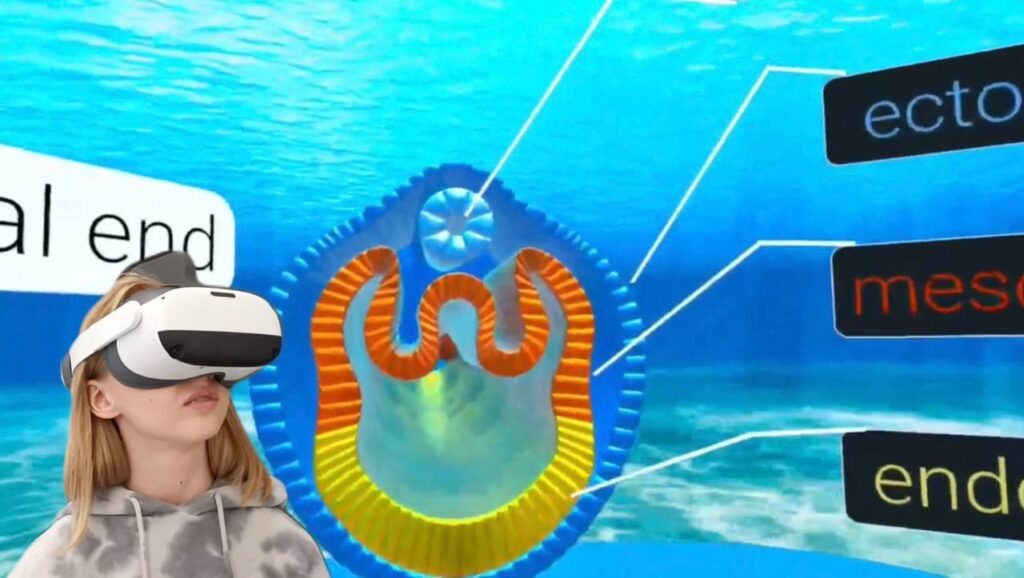

The rise of immersive learning tools has opened up new horizons for educators around the globe. From virtual lessons in biology or physics to advanced simulations in a digital STEM lab, these innovations promise more engaging and interactive classroom activities. However, questions about the appropriate age for students to use headsets persist, especially when it comes to balancing safety and educational value.

In a world where technology in schools is on the rise, using head-mounted displays can elevate how students experience science, history, and even literature. Interactive 3D lessons help children visualize complex subjects, transforming abstract ideas into tangible scenarios. For instance, immersive biology labs can replicate cell structures, making them more understandable, while advanced digital chemistry modules let students “conduct” experiments without real-life dangers.
Key Advantages:
Despite the benefits, many headset manufacturers advise caution regarding younger users—often recommending that children under 10–13 avoid these devices or use them sparingly. Concerns revolve around:

Educators and parents often worry about screen time. However, an immersive lesson can be more efficient than extended periods of reading or traditional study. For instance, a short, interactive session about cell division can impart the same knowledge as an hour of passive note-taking. The aim is to balance immersive learning with other methods, ensuring children aren’t tethered to headsets for too long.
Best Practices for Safe Use:

In many high school settings, advanced topics—like exploring electromagnetic fields or conducting virtual dissections—demand a sophisticated approach that textbooks alone can’t offer. Interactive immersion can spark “aha” moments for teens grappling with complex material. For example:
Such experiences answer the classic question: “What’s the practical reason to learn this?” By showing real-world applications or offering safe trial-and-error learning, students see immediate relevance.
While middle and high school learners can handle more advanced simulations, younger children under 10 may benefit from more controlled or limited use. If an elementary teacher chooses to introduce a short, playful simulation, they should keep sessions brief and ensure an adult is on hand to assist. The content must be age-appropriate, too—animated tours of friendly habitats or colorful stories can be enough to spark interest without venturing into taxing or visually intense territory.

We specialize in advanced lesson simulations for older students, designing content aligned with manufacturer guidelines. Our focus ensures middle and high school learners can safely access immersive experiences that enrich their academic journey—be it advanced science, creative problem-solving, or deeper explorations in fields like engineering.
What We Offer:
We also recognize that each school’s environment is different. That’s why we provide flexible options. Whether you’re cautious about younger students or eager to implement advanced concepts for older learners, we collaborate to find the right balance.
Curious about the possibilities immersive learning can offer your classroom? Experience our approach firsthand, see how we tailor modules for various age groups, and discover the future of interactive, student-centered instruction.
👉 Request your free demo now and find out how we can help create a robust, exciting environment for your STEM lab and beyond.
Age restrictions for immersive headsets matter because children’s bodies and brains develop at different rates. While the technology can revolutionize how students learn, educators must weigh potential risks against the significant benefits. For older children—especially those in middle or high school—immersive tools can transform everything from physics experiments to biology simulations. For younger ones, a gentle approach is recommended, ensuring lessons remain fun yet safe.
Ultimately, immersive technology in education is about enhancing, not replacing, tried-and-true methods. With thoughtful integration and adherence to age-appropriate guidelines, students can enjoy a richer, more vibrant learning experience—one that sparks curiosity and brings the world of science to life.
Frequently Asked
We prodive VR biology, VR physics, and VR chemistry simulations. Please, check our catalog.
Please, fill the form to get demo labs for free.
Please contact our customer support service at support@xreadylab.com or book a call with the team to find out the conditions and book the VR class set up at your school.
Subscription to XReady Lab interactive VR labs. If you are a school, then you are also given access to the VR classroom system. VR class system helps you easily launch VR lessons for a large number of students, follow the experience of each student, as well as customise the content without developers.
We adhere to the world’s generally accepted recommendations and research. Our products are suitable for children from 12 years old.